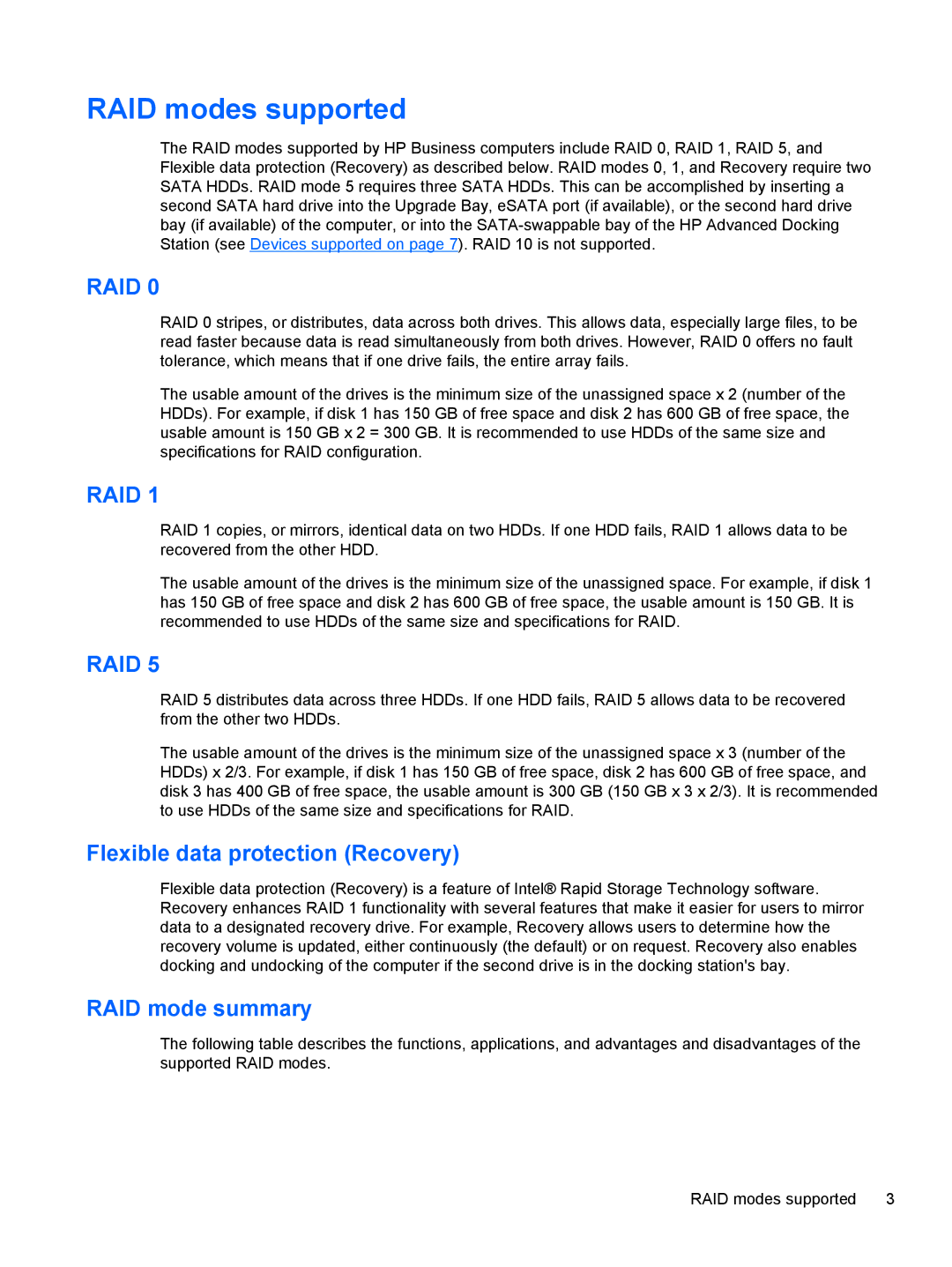RAID modes supported
The RAID modes supported by HP Business computers include RAID 0, RAID 1, RAID 5, and Flexible data protection (Recovery) as described below. RAID modes 0, 1, and Recovery require two SATA HDDs. RAID mode 5 requires three SATA HDDs. This can be accomplished by inserting a second SATA hard drive into the Upgrade Bay, eSATA port (if available), or the second hard drive bay (if available) of the computer, or into the
RAID 0
RAID 0 stripes, or distributes, data across both drives. This allows data, especially large files, to be read faster because data is read simultaneously from both drives. However, RAID 0 offers no fault tolerance, which means that if one drive fails, the entire array fails.
The usable amount of the drives is the minimum size of the unassigned space x 2 (number of the HDDs). For example, if disk 1 has 150 GB of free space and disk 2 has 600 GB of free space, the usable amount is 150 GB x 2 = 300 GB. It is recommended to use HDDs of the same size and specifications for RAID configuration.
RAID 1
RAID 1 copies, or mirrors, identical data on two HDDs. If one HDD fails, RAID 1 allows data to be recovered from the other HDD.
The usable amount of the drives is the minimum size of the unassigned space. For example, if disk 1 has 150 GB of free space and disk 2 has 600 GB of free space, the usable amount is 150 GB. It is recommended to use HDDs of the same size and specifications for RAID.
RAID 5
RAID 5 distributes data across three HDDs. If one HDD fails, RAID 5 allows data to be recovered from the other two HDDs.
The usable amount of the drives is the minimum size of the unassigned space x 3 (number of the HDDs) x 2/3. For example, if disk 1 has 150 GB of free space, disk 2 has 600 GB of free space, and disk 3 has 400 GB of free space, the usable amount is 300 GB (150 GB x 3 x 2/3). It is recommended to use HDDs of the same size and specifications for RAID.
Flexible data protection (Recovery)
Flexible data protection (Recovery) is a feature of Intel® Rapid Storage Technology software. Recovery enhances RAID 1 functionality with several features that make it easier for users to mirror data to a designated recovery drive. For example, Recovery allows users to determine how the recovery volume is updated, either continuously (the default) or on request. Recovery also enables docking and undocking of the computer if the second drive is in the docking station's bay.
RAID mode summary
The following table describes the functions, applications, and advantages and disadvantages of the supported RAID modes.
RAID modes supported | 3 |
